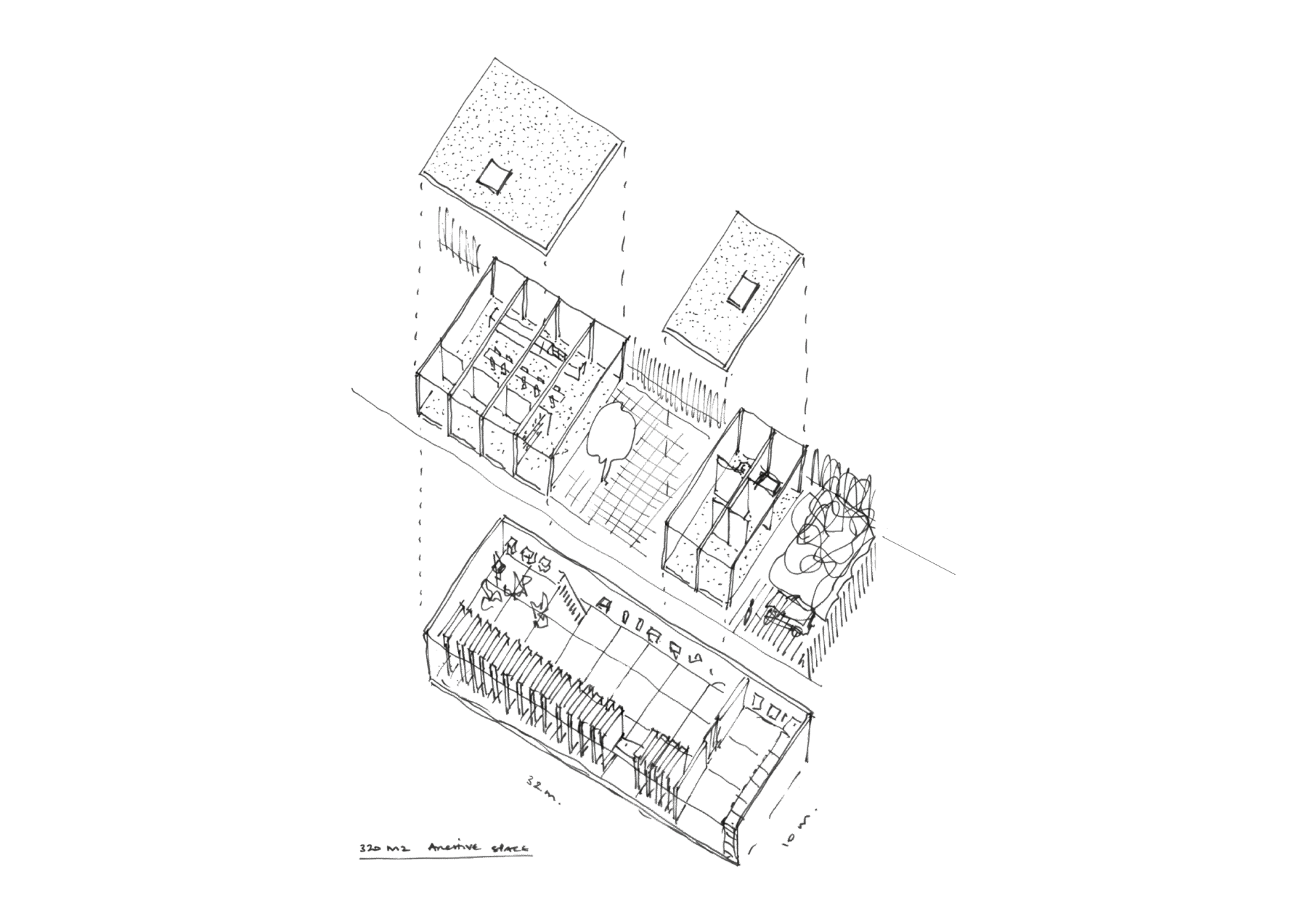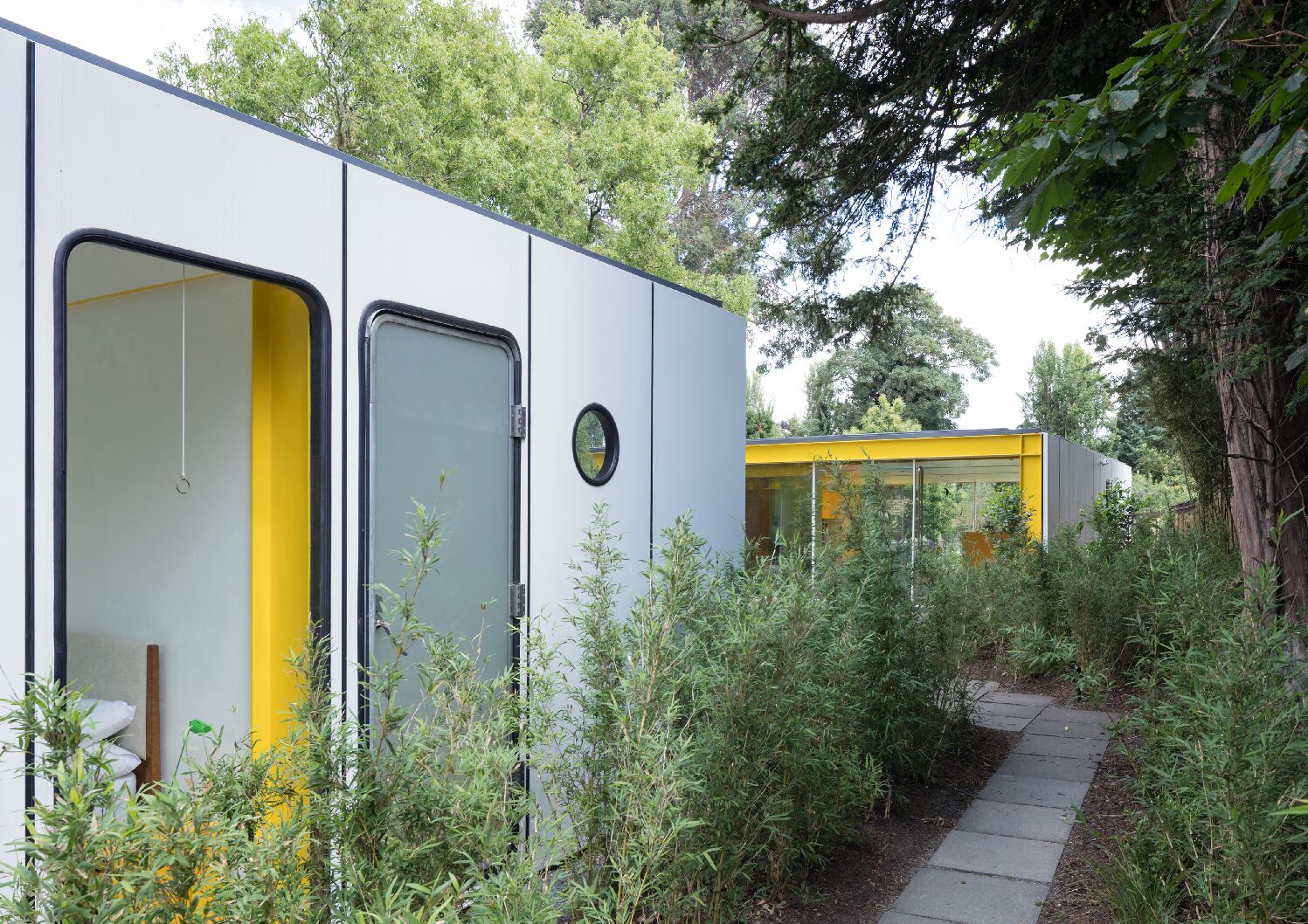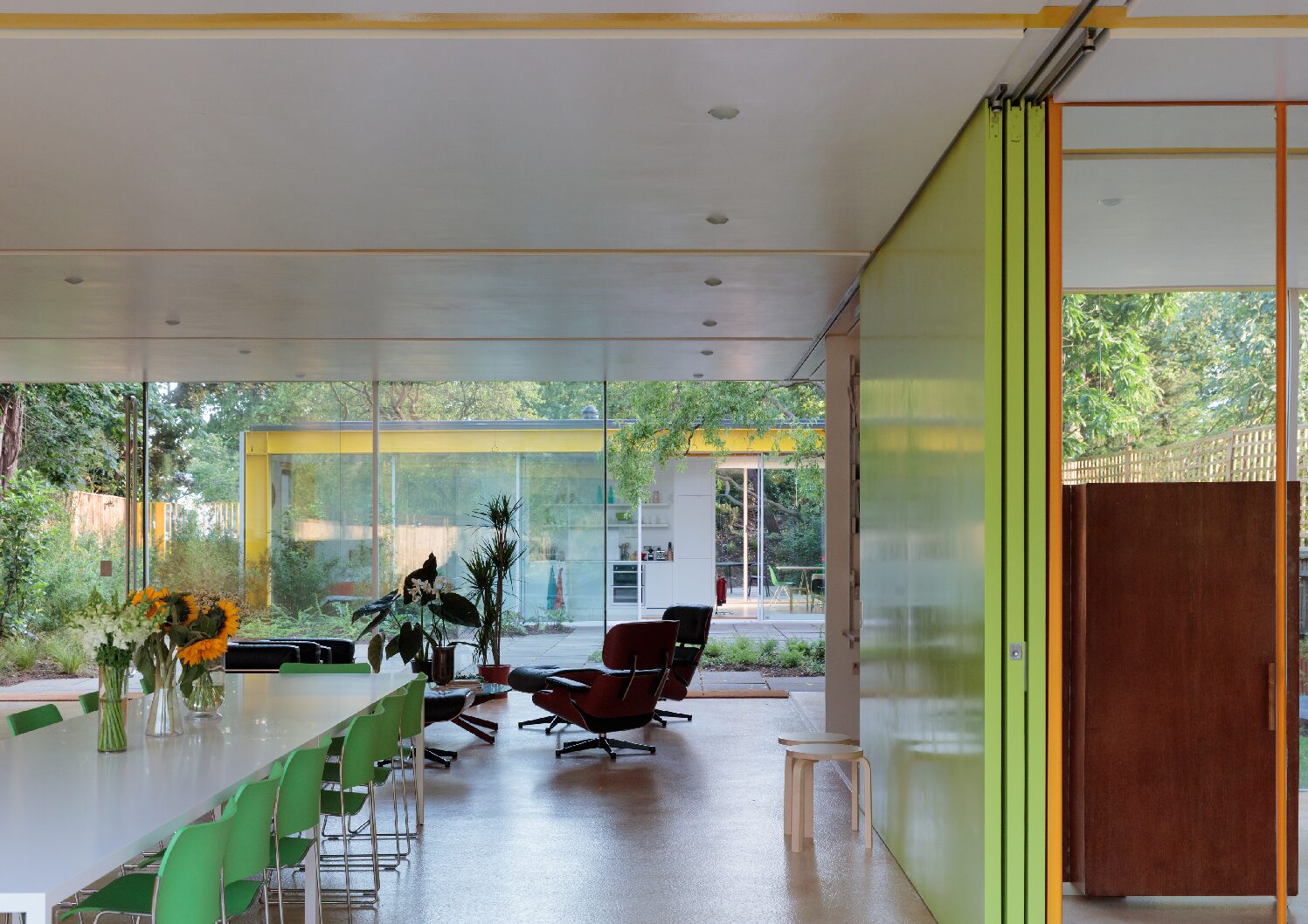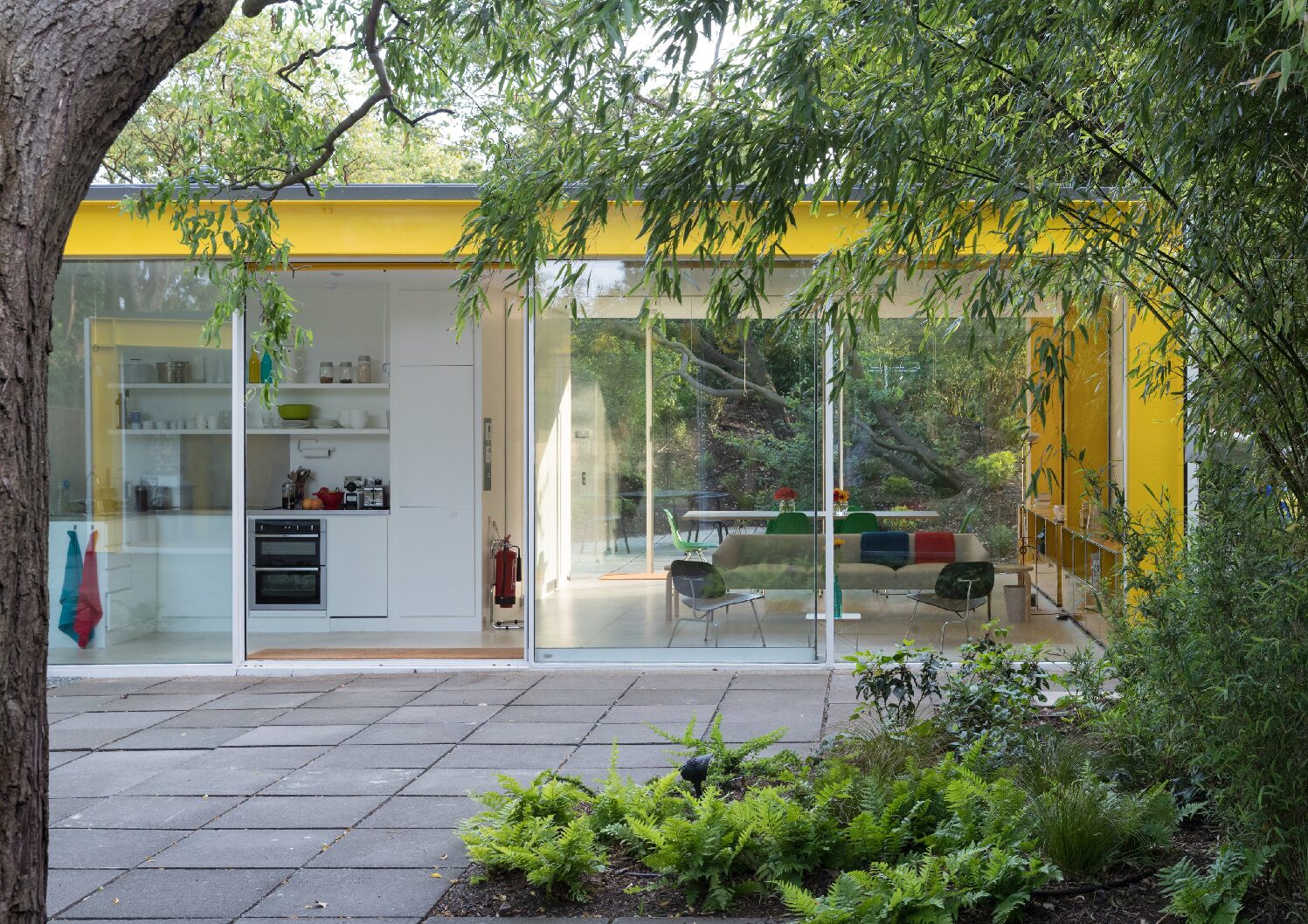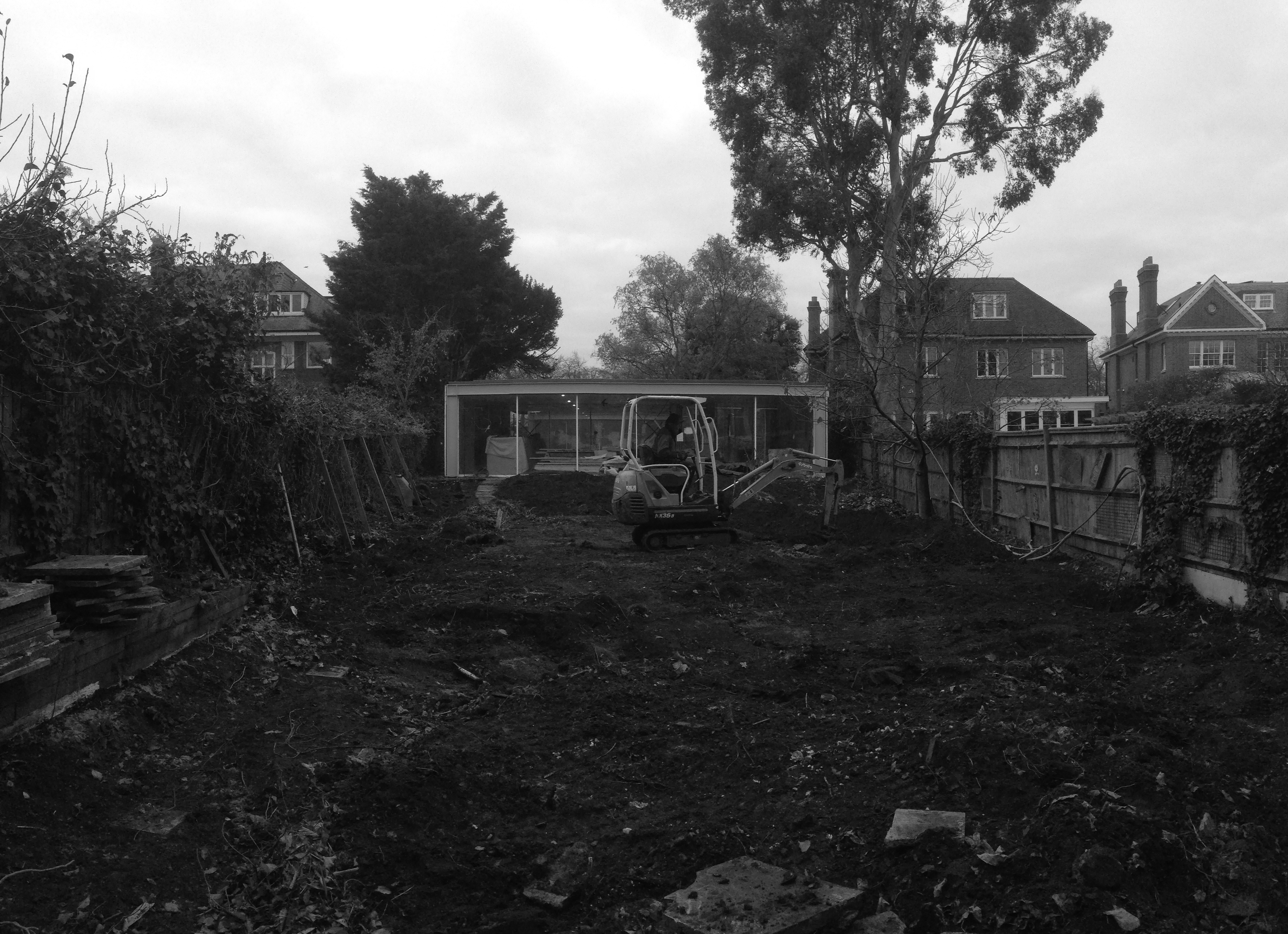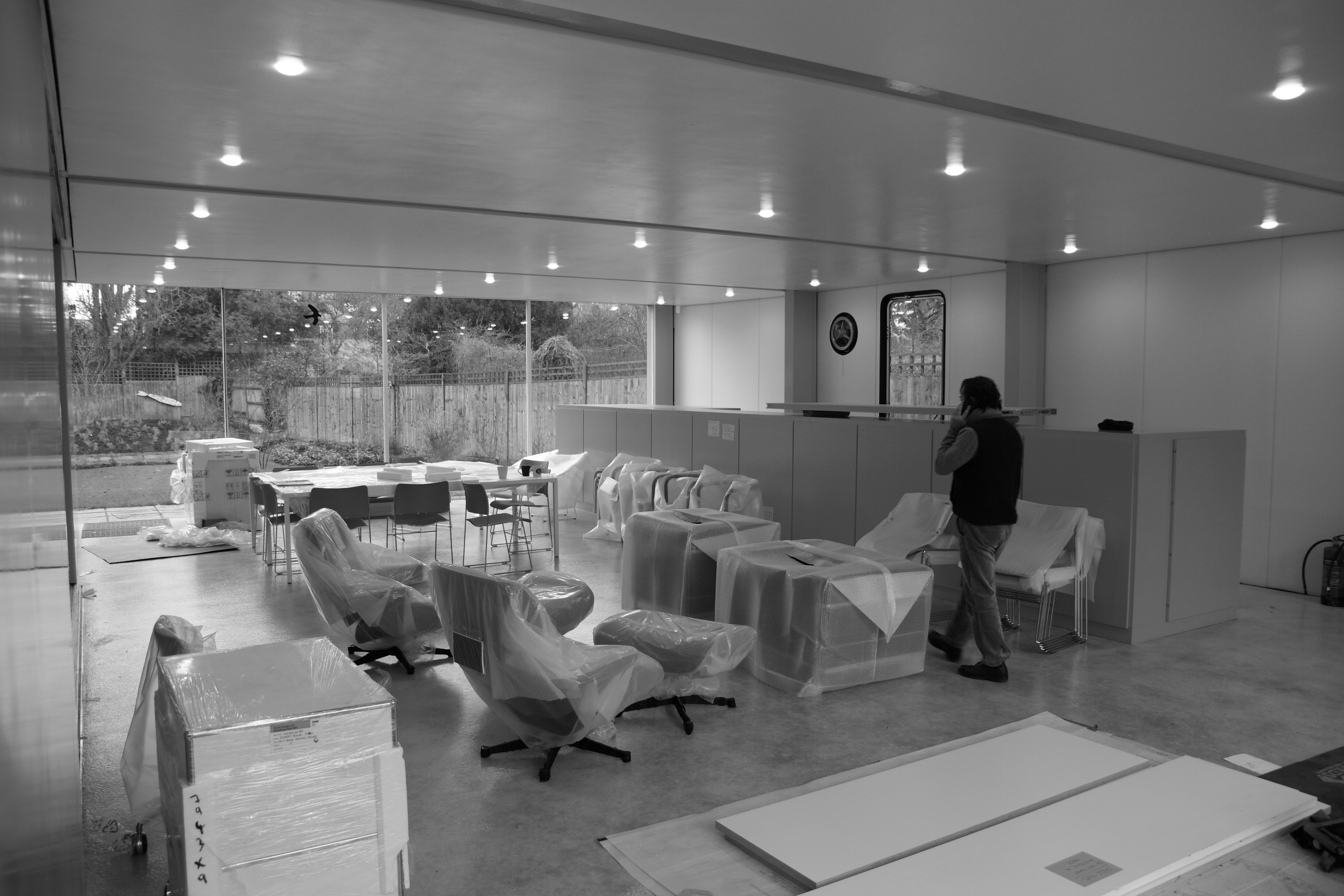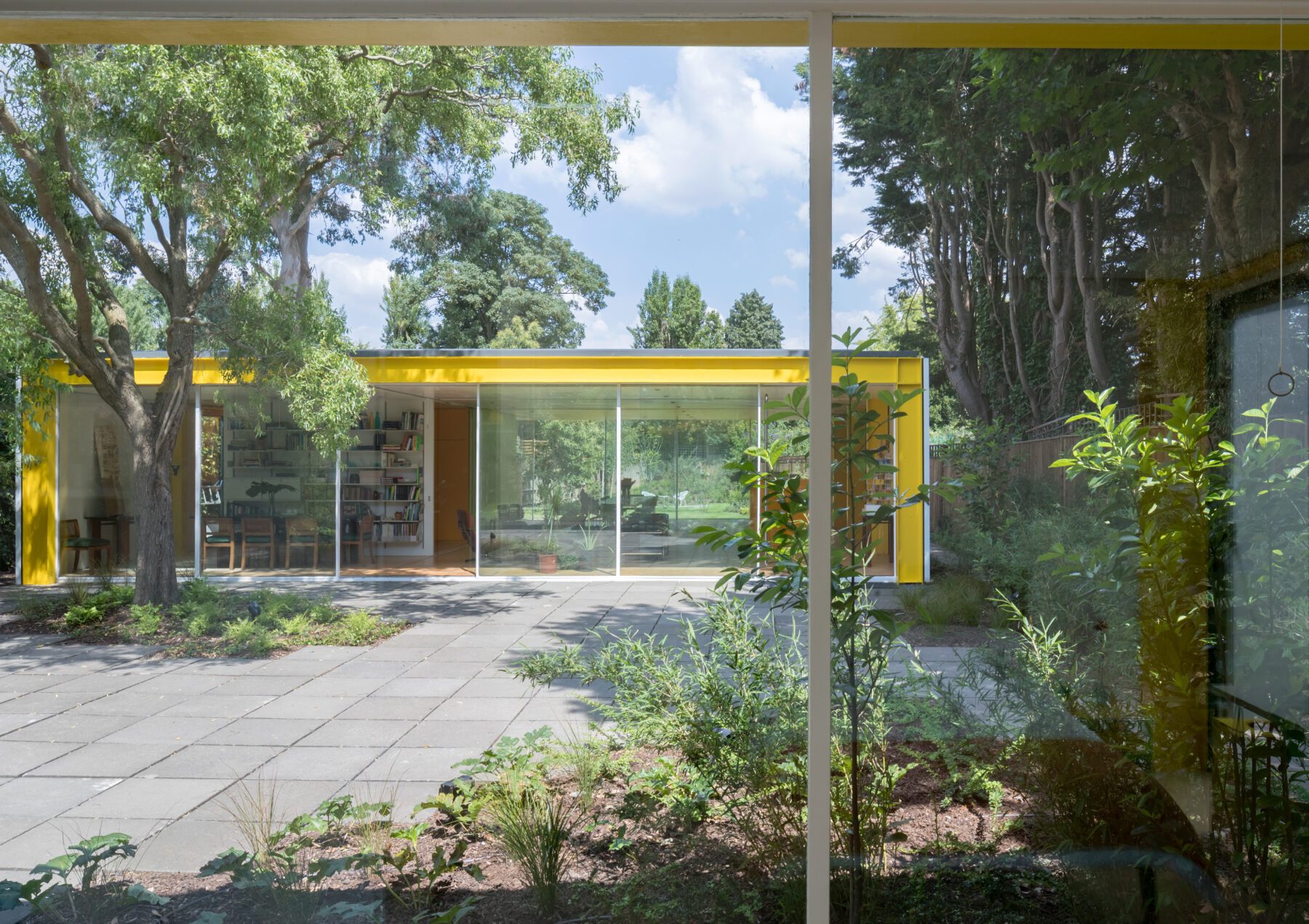
Our competition submission had proposed linking the two pavilions below ground with a dedicated archive space for a future Richard Rogers Foundation. The idea was not taken up but intrigued the panel sufficiently to win us the commission to restore and adapt the Grade 2* listed building. The building was designed by Richard + Su Rogers in 1968 for his parents but their eye had been on prototyping an industrialised social housing system. After 50 years of intensive change by multiple members of the Rogers family, in 2017 the house was donated to Harvard GSD for their ‘Cities’ fellowship programme.
Whilst Richard designed a building that was infinitely flexible and adaptable our role was to design adaptations to suit academic use with an eye on its overall historic significance. To my mind the preservation of the building’s patina and spirit of detailing needed to survive the radical changes that were required to alter, up-date and make safe the building. Furthermore the building had already undergone continuous adaption since the 1960’s and we needed to identify a period of its greatest significance to aim at. I personally felt its spirit was best expressed by the serenity of his parents’ occupation in the early 1980’s when I had first visited the house.
The seemingly simple proposition of adapting an adaptable building required a radical re-imagining based on archival research, demolishing recent additions, updating internal services, refurbishing joinery and furniture, and redesigning the garden to restore the transparency and vistas that Rogers and his parents had originally envisioned. The radical restoration and adaption involved replacing 75% of its 1960s fabric, including the entire roof, asbestos-filled panelled walls and all its services. The result is a re-invention that preserves the building’s spirit, ensuring its relevance to both its past and future. When Richard and Renzo sat in the garden after its restoration comparing notes on their respective early work, I felt the correct balance had been achieved.
